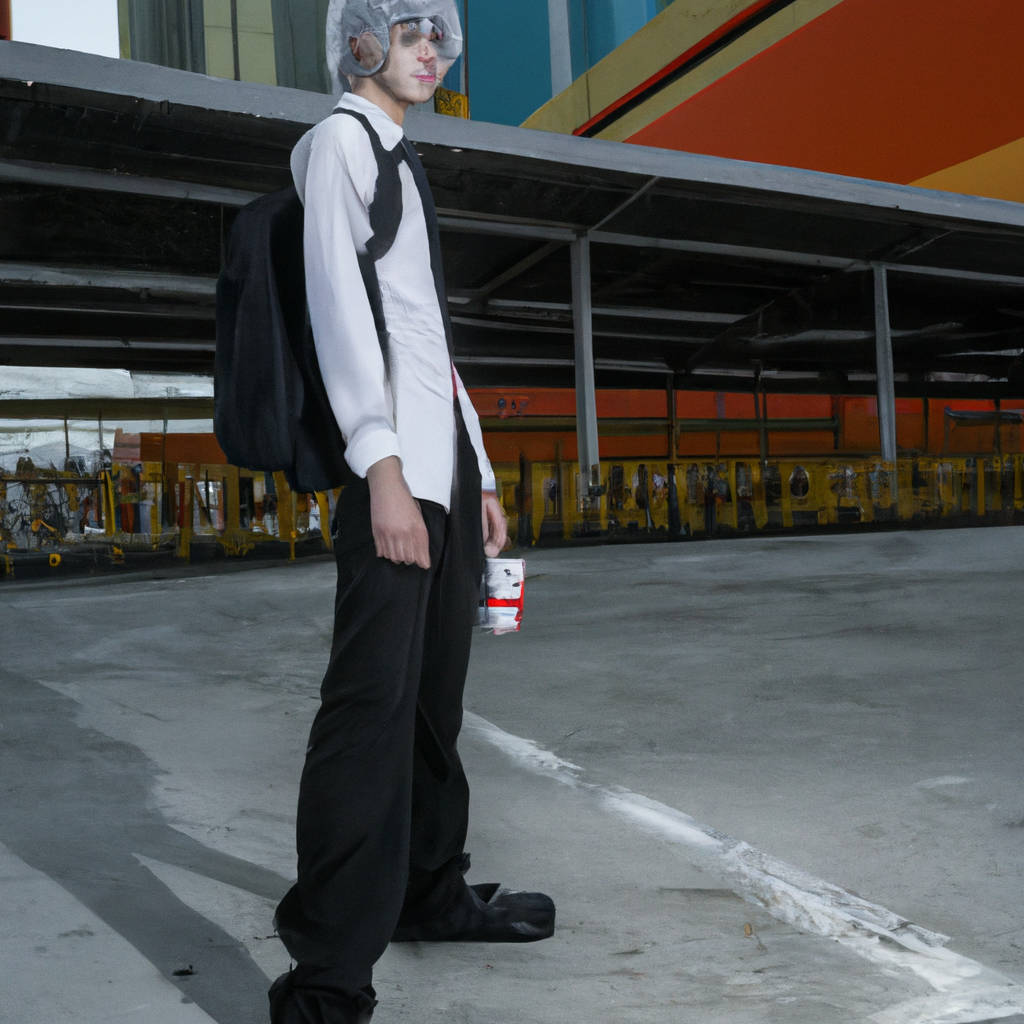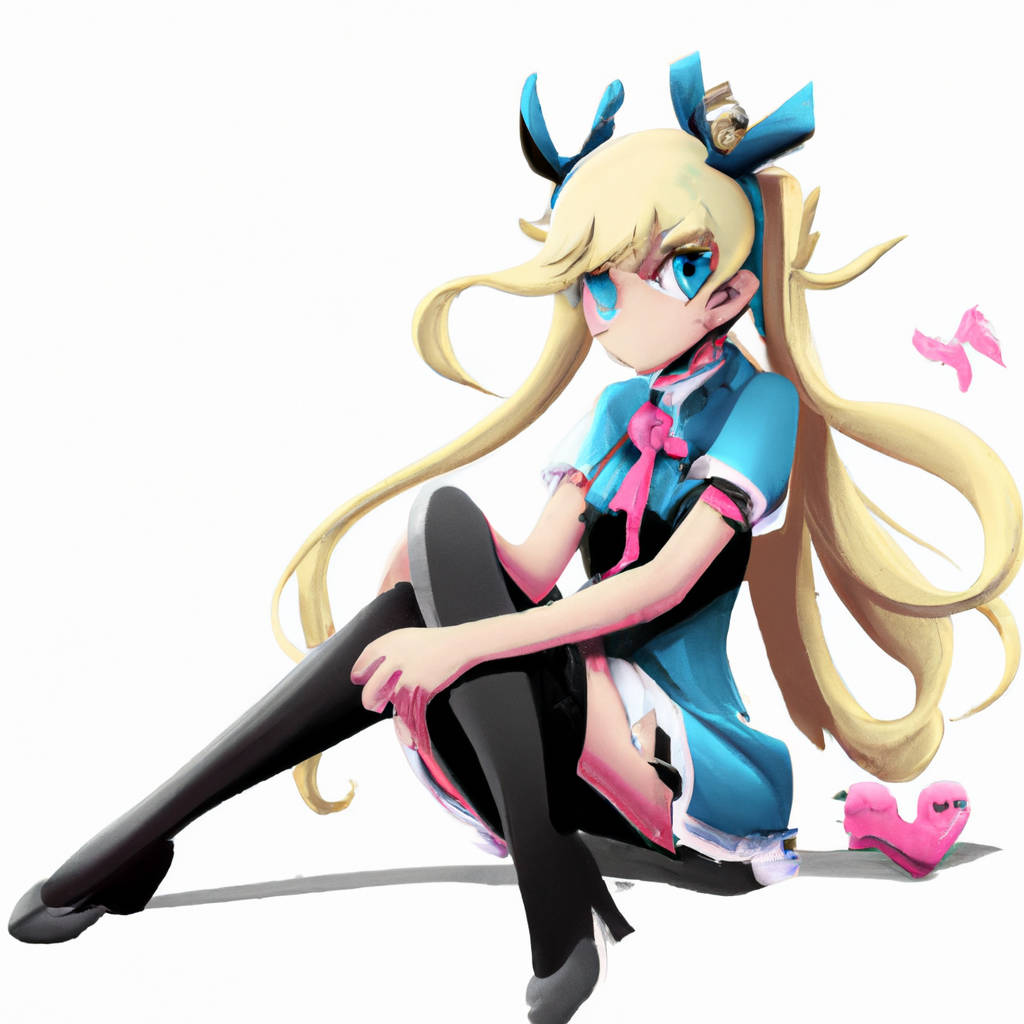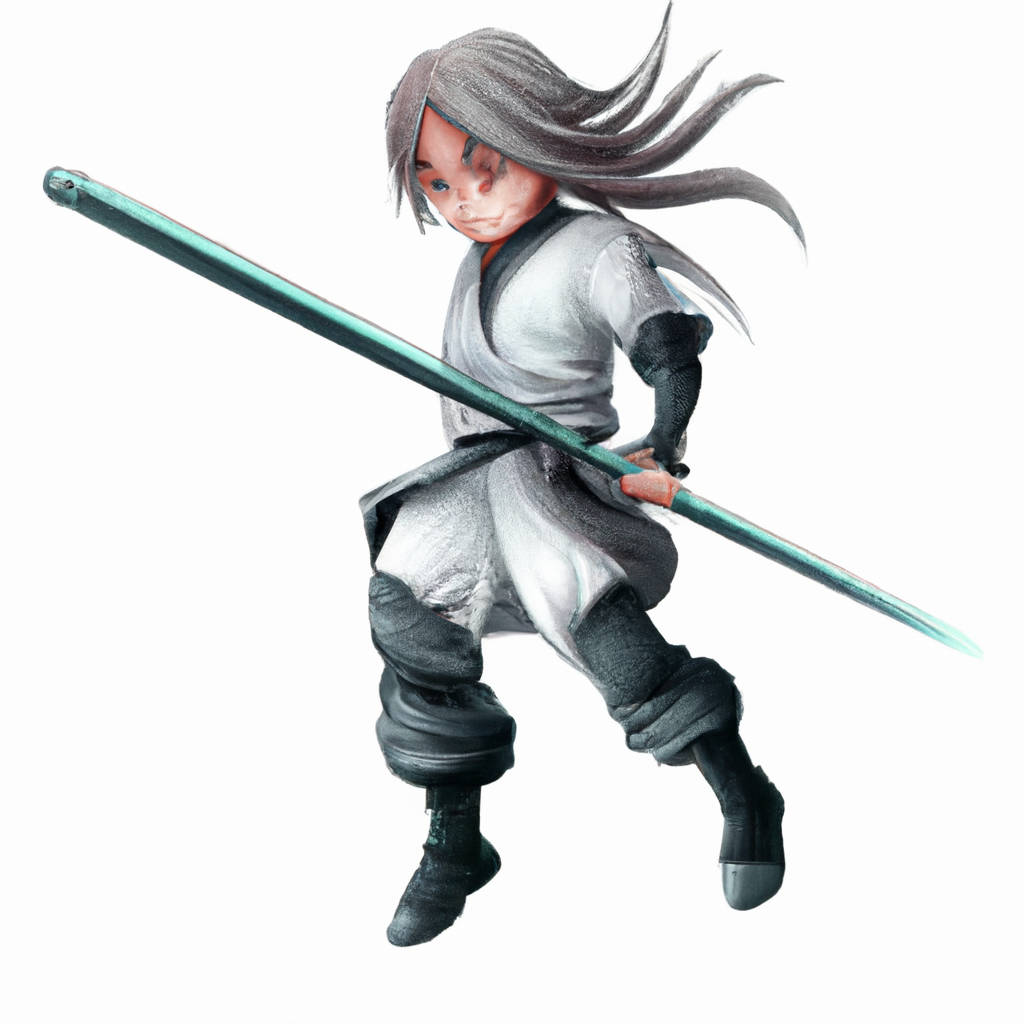The realm of anime is vast and diverse, encompassing a multitude of genres, including the especially intense and gruesome realm of gore anime. This category is not for the faint-hearted, as it involves depictions of graphic violence, brutality, and sometimes, death. One of the most notorious titles in this genre is “Elfen Lied,” known for its unsettling narrative and explicit scenes of bloodshed. Another noteworthy title is “Hellsing Ultimate,” a series that combines the elements of horror and action in a spectacularly gory narrative. “Tokyo Ghoul” also deserves a mention, as it intertwines the concept of human-eating creatures with intense battle sequences, resulting in a blood-soaked spectacle. “Another,” on the other hand, is a psychological horror anime that keeps viewers on the edge of their seats with its suspenseful plot and shocking death scenes. Last but not least, “Corpse Party: Tortured Souls” takes the gore level up a notch with its gruesome depiction of a haunted school setting. These five anime series perfectly exemplify the gore genre, each one offering a unique blend of horror, suspense, and graphic violence that will surely leave an indelible mark on viewers.
“Hellsing Ultimate”
“Hellsing Ultimate” is an exceptional anime series, distinguished by its dark themes and mature content. Adapted from Kouta Hirano’s manga, “Hellsing”, this 10-episode OVA (Original Video Animation) series is a more faithful adaptation of the source material than the previous 2001 TV series. Set in the United Kingdom, the storyline revolves around the Royal Order of Protestant Knights, led by Sir Integra Fairbrook Wingates Hellsing, as they combat supernatural threats to the nation. These threats primarily consist of vampires and ghouls, being the main antagonists of the series. The organization’s most potent weapon is Alucard, an exceedingly powerful and almost invincible vampire who is in servitude to the Hellsing family. Alucard, along with his newly turned vampire servant Seras Victoria, confront these threats head-on. The series is especially known for its brutal, intense, and graphic depiction of violence, making it a unique offering in the world of anime. Adding to this are the complex characters, each with their own elaborate backstory, contributing to the sophisticated narrative of the series. The dark, atmospheric art style and the haunting musical score further enhance the viewing experience, immersing the audience in a world where supernatural entities are a grim reality. “Hellsing Ultimate” also explores intriguing themes like morality, the nature of humanity, and the costs of power and immortality, setting it apart from typical action-oriented anime. Despite its mature content and grim tone, the series has gathered an impressive fanbase, and it’s often praised for its storytelling, character development, and artistic style.
“Tokyo Ghoul”
“Tokyo Ghoul” is an incredibly popular Japanese dark fantasy manga series written and illustrated by Sui Ishida. Set in an alternate reality where flesh-eating creatures known as ghouls coexist with humans, the plot unravels around Ken Kaneki, the protagonist who, after a fateful encounter, turns into a half-ghoul. The series astutely explores themes of identity, belonging, and the gray area between humanity and monstrosity. Kaneki’s transformation pulls him into the ghoul’s world, forcing him to grapple with his new reality while preserving his human values.
In this grim and complex universe, ghouls must consume human flesh to survive, leading to inevitable conflict with humans who view them as monstrous threats. The series moves beyond the simplistic binary of human versus monster, showing that both groups harbor individuals with a range of moral complexities. This nuanced perspective is introduced through the Anteiku, a group of ghouls who strive to coexist peacefully with humans by consuming coffee and ethically sourced human flesh.
“Tokyo Ghoul” is noteworthy for its captivating art style, complex characters, and a storyline rich with psychological depth. As Kaneki navigates his way through the ghoul society, he encounters a diverse array of characters, each with their own unique motivations and struggles. These interactions force him to question his own identity and morality, adding layers of depth to his character development.
The series is also renowned for its symbolic use of color, particularly black and white, to represent the dichotomy of life and death, human and ghoul, and the blurred lines between them. This is most evident in Kaneki’s character design, with his iconic black and white hair color change symbolizing his transformation and internal conflict.
In conclusion, “Tokyo Ghoul” is a compelling exploration of identity, morality, and the struggle for coexistence in a world fraught with conflict and misunderstanding. Its powerful storytelling, paired with its vivid and symbolic artistry, makes it an unforgettable addition to the dark fantasy genre.

“Devilman Crybaby”
“Devilman Crybaby” is an intense, vivid anime series that explores the boundaries of human nature and morality through a visually stunning narrative. This Netflix original anime, based on the classic 1970s manga, “Devilman” by Go Nagai, has captured the attention of viewers worldwide with its unique storytelling and aesthetics. The series chronicles the life of Akira Fudo, a timid adolescent who transforms into a robust, demon-fighting figure dubbed “Devilman”. This transformation is brought about by his childhood friend, Ryo Asuka, who reveals that the world is under a secret invasion by demons. As the story unfolds, it delves into the grey areas of morality, challenging the dichotomy of good and evil, and instead, highlighting the complexities of human emotions and choices. The series effectively uses its graphic scenes and mature themes to question the very essence of humanity. The art style blends surrealism with traditional animation techniques, creating an eerie, dreamlike atmosphere that complements the series’ dark themes. Moreover, the soundtrack, characterized by an eclectic mix of classical and electronic music, underscores the emotional intensity of the series, adding depth to its narrative. “Devilman Crybaby” is a thought-provoking, poignant series that leaves a lasting impression on its viewers, inviting them to ponder over the nuanced aspects of humanity and morality. Despite its graphic content and mature themes, it is worth noting that the series is not for the faint-hearted. However, for those who appreciate a deeply moving narrative that challenges conventional notions of morality, “Devilman Crybaby” is a must-watch.
“Deadman Wonderland”
“Deadman Wonderland” is a captivatingly gruesome work of Japanese anime and manga, created by Jinsei Kataoka and Kazuma Kondou. It presents an intriguing dystopian future where a massive earthquake obliterates 70% of Tokyo, leading to the establishment of a highly unusual, privately-run prison called Deadman Wonderland. This prison doubles as an amusement park, where the inmates are the main attractions, performing dangerous stunts for the amusement of the public. The story revolves around Ganta Igarashi, a young boy erroneously convicted for the mass murder of his entire class. As a result, Ganta is sent to this grotesque prison, where he must navigate through the harsh realities while attempting to clear his name. The plot thickens as Ganta discovers his ability to manipulate his blood, a skill unique to the ‘Deadmen’ within the prison. The narrative takes a dark turn as these Deadmen are forced to participate in brutal gladiatorial contests for the amusement of the rich and powerful. The series’ appeal lies in its exploration of themes like survival, betrayal, and friendship, set against a backdrop of chilling violence and suspense. The distinctive art style, the multilayered characters, and the intense, action-packed sequences come together to make “Deadman Wonderland” a gripping and unforgettable anime experience. Although the show’s graphic nature may not appeal to everyone, it nonetheless offers a compelling portrayal of resilience and the human will to survive in the face of extreme adversity.

“Corpse Party”
“Corpse Party” is an evocative and chilling Japanese survival horror video game series that initially emerged from the RPG Maker software. Originally developed by Team GrisGris and published by XSEED Games, it is renowned for its atmospheric storytelling, unexpected plot twists, and compelling characters. The narrative revolves around a group of high school students who find themselves trapped in an alternate reality version of their school, which is haunted by the tormented souls of those who perished there.
The game operates within a ‘choose-your-own-adventure’ format, where decisions made by the player can significantly alter the storyline’s trajectory, leading to various endings that range from mild to utterly terrifying. The elements of suspense and fear are heightened by the game’s 2D sprite graphics and eerie audio cues, which complement the intricate plot development and character arcs. Notably, “Corpse Party” is much more than a conventional horror game. It delves into psychological terror, exploring the dark depths of human nature when faced with fear and hopelessness.
Moreover, the “Corpse Party” series successfully transcends its video game origins, inspiring several manga adaptations, anime series, and even live-action films. Its influence on the horror genre within the world of gaming is significant, proving that a potent narrative and well-developed characters can evoke a sense of terror that transcends the limitations of its simplistic graphics. Despite its disturbing themes, “Corpse Party” has garnered a considerable cult following due to its ability to create an unforgettable, spine-chilling gaming experience. The appeal of “Corpse Party” lies in its distinctive blend of horror, suspense, and intricate storytelling, marking it as a noteworthy exemplar of the survival horror genre.
“Blood-C”
“Blood-C” is a fascinating anime series that merges the elements of horror, mystery, and supernatural genres in a unique blend. It’s a collaborative project between Production I.G and manga creator team CLAMP. The narrative revolves around the primary character, Saya Kisaragi, a seemingly ordinary schoolgirl by day, who transforms into a fearsome monster slayer by night. Her life is a constant oscillation between her mundane responsibilities as a student and the ominous task of protecting her town from grotesque creatures known as elder bairns.
The storyline of “Blood-C” is laced with unexpected twists and turns, keeping the viewers on the edge of their seats. The series also explores the dichotomy of Saya’s existence and her struggle to reconcile her two disparate lives. The animation is visually stunning, with its detailed and vivid portrayal of action sequences, enhancing the overall viewing experience. However, it’s the intricate character development that truly sets “Blood-C” apart. Saya’s journey from an innocent girl oblivious of her destiny to a relentless warrior is compelling and emotionally engaging.
“Blood-C” also delves deep into the themes of identity and destiny, raising thought-provoking questions about the nature of reality and the cost of survival. The series is not for the faint-hearted due to its explicit violence and gore. However, it’s a must-watch for fans of dark, suspenseful anime with strong female protagonists. The series’ complex narrative, coupled with its hauntingly beautiful animation, creates an unforgettable viewing experience. It’s a testament to the creativity and innovation of Japanese anime, pushing the boundaries of storytelling and visual artistry.
“Deadman Wonderland”
“Deadman Wonderland” is a riveting anime series that unfolds in a seemingly unusual setting – a privately run prison that doubles as an amusement park. This unique show takes viewers on an intense, dark journey inside the lives of its characters, compelling them to question the boundaries of morality and justice. The protagonist, a middle-school student named Ganta Igarashi, is unfairly convicted for a crime he did not commit and is sentenced to serve in this bizarre prison. The series delves into the harsh realities of his life within the prison, and the cruel, often inhumane challenges he must overcome for survival.
The story introduces various elements of suspense and horror as it navigates the twisted world of Deadman Wonderland. The inmates, including Ganta, are forced to participate in perilous games for the amusement of the park’s visitors. As the plot unravels, Ganta discovers a group of ‘Deadmen,’ prisoners possessing the ability to control their blood, turning it into a weapon. The thrill escalates as Ganta himself acquires this power and becomes embroiled in the park’s clandestine battles.
The series masterfully intertwines elements of despair, courage, and survival, creating a riveting narrative that keeps viewers on the edge of their seats. Each character is meticulously developed, with their stories unraveled as the series progresses, adding depth and complexity to the overall narrative. The series also explores themes of friendship, betrayal, and the quest for freedom, painting a vivid picture of life within the prison’s walls.
Undeniably, “Deadman Wonderland” is a gem in the realm of anime, offering a unique premise and a captivating storyline. Its dark undertones and raw depiction of a dystopian world make it an unforgettable viewing experience. This unusual blend of horror, suspense, and drama is a testament to the series’ exceptional creativity and storytelling prowess, making it a must-watch for any anime enthusiast.
“Shigurui: Death Frenzy”
“Shigurui: Death Frenzy” is a profound and intensely graphic anime series that delves into the heart of the samurai code. The story takes a deep dive into the often brutal world of feudal Japan, showcasing the harsh reality of survival in an era dictated by the sword. Adapted from a manga series written by Norio Nanjo and illustrated by Takayuki Yamaguchi, the series encapsulates the true essence of samurai culture. The narrative revolves around two main characters, Gennosuke Fujiki and Seigen Irako, who are disciples of the Kogan style of sword fighting. The series unfolds in a non-linear fashion, alternating between the past and the present, providing the viewer with a detailed background of the characters and their motivations. The plot is heavily layered with themes of power, honor, and the struggle for survival, which are all intricately woven into the narrative. The series is known for its unflinching portrayal of violence and its brutal honesty in presenting the code of the samurai. The animation is breathtakingly detailed, with meticulous attention paid to the historical accuracy of the time period. The series is intense and not for the faint-hearted. Yet, it offers a mesmerizing portrayal of the samurai’s life and death struggle, a dance on the knife’s edge between honor and survival. The raw power, the precise movements, the unyielding discipline – all of this is brought to life in a way that is both horrifying and engrossing. “Shigurui: Death Frenzy” is a stark reminder of the dark underbelly of the samurai code, a testament to the harsh reality of life and death in feudal Japan.

“Shiki”
Shiki is a critically acclaimed Japanese anime and manga series, written by Fuyumi Ono and illustrated by Ryu Fujisaki. The story ingeniously merges elements of horror, drama, and mystery, creating a riveting narrative that keeps audiences on their toes. Set in a secluded mountain village, Shiki explores the frightening phenomenon of sudden, unexplained deaths, which begins to plague the close-knit community, triggering a chilling ripple of fear among its inhabitants.
As the narrative unfolds, it is revealed that these mysterious fatalities are the result of vampiric creatures, known as “Shiki,” who are preying on the villagers. The Shiki are not depicted as traditional villains but as sentient beings struggling for survival, adding layers of depth and complexity to the story.
The series is renowned for its psychological exploration of the human condition, blurring the line between humanity and monstrosity. It asks questions about the nature of life, death, and existence, challenging conventional notions of morality without explicitly labeling any act as ‘right’ or ‘wrong.’
The artwork is equally captivating, with intricate designs and a distinct aesthetic that complements the eerie, suspenseful atmosphere of the series. Shiki’s visual appeal extends to its character designs, which are strikingly unique and filled with personality, reflecting the diverse cast of characters and their evolving emotional states.
Shiki’s strength lies in its nuanced storytelling and characterization, as well as its ability to unsettle and intrigue audiences. It is a thought-provoking series that invites viewers to ponder deep, existential questions while immersing them in a suspense-filled narrative. Despite its horror elements, Shiki is not merely a tale of fear and survival; it is a profound exploration of human nature and the complexities of existence. The series leaves a lasting impression, offering a unique blend of horror, drama, and philosophical inquiry that distinguishes it in the realm of anime and manga.
“Psycho-Pass”
“Psycho-Pass” is a renowned Japanese anime television series, which explores a dystopian future society where individuals are evaluated and managed based on their mental state and propensity for criminal behavior. This evaluation is performed by an advanced biometric system known as the Sibyl System, which scans the ‘Psycho-Pass’ of each citizen. The intriguing premise of the show thrives on the ethical and philosophical dilemmas that arise from such a system.
The Sibyl System, through its omniscient surveillance and public management, effectively eliminates traditional crime prevention methods. It measures the citizens’ potential for antisocial behavior, stress level, and overall mental health, facilitating a proactive approach to societal order. However, the efficiency of this system in maintaining peace and stability comes at the cost of personal privacy and freedom, sparking debates on the ethics of such governance.
The series follows the story of Akane Tsunemori, a new inspector in the Public Safety Bureau’s Criminal Investigation Division. She grapples with the moral implications of the Sibyl System and the judgment it imposes on society. She, along with her enforcers, individuals deemed to have a higher potential for criminal behavior, are tasked with apprehending those identified as potential threats by the system.
“Psycho-Pass” is an exploration of the human psyche, societal norms, and the concept of justice, presenting a complex interplay of ideals and realities. It questions the notion of a perfect society and the lengths one can go to achieve it. With its profound narrative, intriguing characters, and thought-provoking concepts, “Psycho-Pass” stands as a remarkable piece in the realm of science fiction and psychological thriller anime. It invites viewers to question the boundaries of morality and the profound impact of technology on our lives, making it a must-watch for those who seek intellectual stimulation from their viewing experience.

